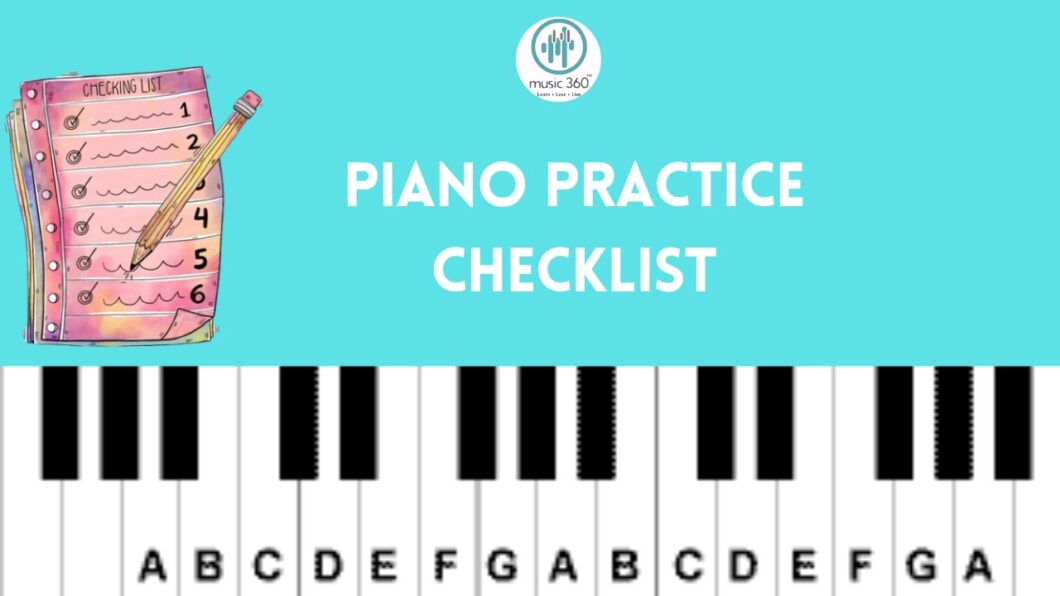Unleash Your Inner Maestro: A Comprehensive Piano Practice Checklist for Beginners Embark on a Musical Journey with Confidence and Ease
Introduction: Striking the Right Chords
Music, the universal language that transcends boundaries and unites souls, has captivated humanity for centuries. The piano, with its captivating melodies and harmonious chords, has long been a cornerstone of musical expression. Embarking on a piano-playing journey can be an enriching and fulfilling experience, opening up a world of creativity, self-expression, and personal fulfilment.

Setting the Stage for Success: Essential Warm-ups
Before delving into the world of melodies and harmonies, it’s crucial to prepare your body for the demands of playing the piano. Proper warm-ups not only prevent injuries but also enhance your playing ability.

- Hand Stretches: Begin by gently stretching your fingers and wrists to loosen up the muscles and improve flexibility.
- Finger Power Exercises: Engage in exercises that strengthen your fingers, enabling you to control the keys with precision and power.
- Posture Check: Ensure proper posture by sitting upright with your back straight, shoulders relaxed, and feet flat on the floor. Good posture promotes optimal breathing and technique.
Mastering the Fundamentals: Technique and Sight-Reading
A solid foundation in technique is the cornerstone of becoming a proficient pianist. Dedicate time to refining your finger placement, hand position, and pedaling technique.

- Finger Placement: Place your fingers on the tips of the keys, ensuring a curved and relaxed position for optimal control.
- Hand Position: Maintain straight wrists and avoid excessive force to prevent fatigue and strain.
- Pedaling: Practice using the sustain pedal to hold down notes and the soft pedal for softer tones.
Sight-reading, the ability to read and play written music fluently, is essential for any pianist.

- Start Simple: Begin with easy pieces to build confidence and familiarity with music notation.
- Focus on Notes and Rhythms: Practice reading the notes and rhythms accurately, using a metronome to maintain a steady tempo.
Expanding Your Musical Horizons: Ear Training and Repertoire
Ear training, the ability to identify and reproduce musical sounds, is crucial for developing musical sensitivity and improvisation skills.

- Listen Actively: Engage in regular listening sessions to various genres of music, focusing on identifying notes and rhythms.
- Sing or Hum Along: Practice singing or humming along to melodies to develop your internal pitch recognition.
- Play by Ear: Challenge yourself to play simple melodies by ear, enhancing your ability to translate sounds into piano notes.
Building a diverse repertoire of pieces is essential for expanding your musical horizons and keeping your practice sessions engaging.
- Choose Appropriate Pieces: Select pieces that match your current skill level, avoiding frustration and discouragement.
- Break Down Complex Pieces: Divide challenging pieces into smaller sections for focused practice.
- Practice Slowly and Carefully: Dedicate time to mastering each section slowly and carefully before increasing the tempo
Unlocking Creativity: Improvisation and Playing Tips
Improvisation, the art of creating spontaneous melodies, is a hallmark of skilled pianists.

- Start Simple: Begin by improvising simple melodies, experimenting with different chords and rhythms.
- Have Fun: Embrace the freedom and creativity of improvisation, allowing your musicality to flow freely
Playing Tips for Success
- Set Realistic Goals: Establish achievable goals that align with your skill level and avoid setting yourself up for disappointment.
- Practice Consistently: Dedicate regular practice time, even if it’s just for short periods, to maintain progress and momentum.
- Seek Guidance: Consider finding a qualified piano teacher who can provide personalized instruction and feedback.
- Make it Fun: Cultivate a positive and enjoyable practice environment to foster motivation and enthusiasm.
Conclusion: A Journey of Musical Enchantment
Embark on your piano-playing journey with confidence and excitement, armed with this comprehensive practice checklist as your guide. Remember, every great pianist began as a beginner, taking their first steps into the world of music. Embrace the challenges,

